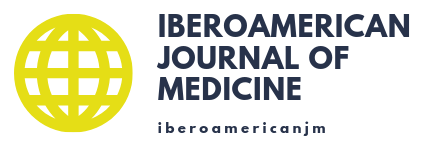How to Design and Apply an Objective Structured Clinical Examination (OSCE) in Medical Education?
Said Said Elshama
Abstract
The Objective Structured Clinical Examination (OSCE) is considered a gold standard summative and formative assessment method wherein it is a comprehensive and standardized tool assessing the clinical competencies including psychomotor domain, attitudes, and behaviors that will be manifested in the real work of the medical graduates. Therefore, the implementation of OSCE depends on the design of a blueprint that consists of two axes; the first axis is the tested competencies according to the learning objectives while the second axis represents a system or problem that is related to these competencies. Thus, the blueprint of OSCE is a translation for the learning objectives into clinical competences such as history taking, physical examination, radiographic and laboratory data interpretation, technical skills, attitudinal behaviors, and counseling skills. In addition, the utility index proved that OSCE has a good balance for acceptability, reliability, validity, credibility, feasibility, cost, and educational impact. However, the use of OSCE for the students' assessment is considered expensive and exhausted because it requires many facilities, a great deal of the personnel besides the needed consuming time for its application.
Keywords
References
1. Elshama SS. How to Develop Medical Education (Implementation View). 1st ed. Scholars' Press Germany; 2016.
2. Barry M, Noonan M, Bradshaw C, Murphy-Tighe S. An exploration of student midwives' experiences of the Objective Structured Clinical Examination assessment process. Nurse Educ Today. 2012;32(6):690-4. doi: 10.1016/j.nedt.2011.09.007.
3. Zayyan M. Objective structured clinical examination: the assessment of choice. Oman Med J. 2011;26(4):219-22. doi: 10.5001/omj.2011.55.
4. Barman A. Critiques on the Objective Structured Clinical Examination. Ann Acad Med Singap. 2005;34(8):478-82.
5. Nulty DD, Mitchell ML, Jeffrey CA, Henderson A, Groves M. Best Practice Guidelines for use of OSCEs: Maximising value for student learning. Nurse Educ Today. 2011;31(2):145-51. doi: 10.1016/j.nedt.2010.05.006.
6. Jay A. Students’ perceptions of the OSCE: a valid assessment tool? Br J Midwifery 2007;15(1):32-7. doi: 10.12968/bjom.2007.15.1.22677.
7. Mitchell ML, Henderson A, Groves M, Dalton M, Nulty D. The objective structured clinical examination (OSCE): optimising its value in the undergraduate nursing curriculum. Nurse Educ Today. 2009;29(4):398-404. doi: 10.1016/j.nedt.2008.10.007.
8. Elshama SS. How to Use Simulation in Medical Education. 1st ed. Scholars' Press Germany; 2016.
9. Davis DA, Mazmanian PE, Fordis M, Van Harrison R, Thorpe KE, Perrier L. Accuracy of physician self-assessment compared with observed measures of competence: a systematic review. JAMA. 2006;296(9):1094-102. doi: 10.1001/jama.296.9.1094.
10. Mookherjee S, Chang A, Boscardin CK, Hauer KE. How to develop a competency-based examination blueprint for longitudinal standardized patient clinical skills assessments. Med Teach. 2013;35(11):883-90. doi: 10.3109/0142159X.2013.809408.
11. Khan KZ, Gaunt K, Ramachandran S, Pushkar P. The Objective Structured Clinical Examination (OSCE): AMEE Guide No. 81. Part II: organisation & administration. Med Teach. 2013;35(9):e1447-63. doi: 10.3109/0142159X.2013.818635.
12. Turner JL, Dankoski ME. Objective structured clinical exams: a critical review. Fam Med. 2008;40(8):574-8.
13. Al Omari A, Shawagfa ZM. New experience with objective structured clinical examination in Jordan. Rawal Med J. 2010;35(1):78-81.
14. Iqbal M, Khizar B, Zaidi Z. Revising an objective structured clinical examination in a resource-limited Pakistani Medical School. Educ Health (Abingdon). 2009;22(1):209.
15. Varkey P, Natt N, Lesnick T, Downing S, Yudkowsky R. Validity evidence for an OSCE to assess competency in systems-based practice and practice-based learning and improvement: a preliminary investigation. Acad Med. 2008;83(8):775-80. doi: 10.1097/ACM.0b013e31817ec873.
16. Brannick MT, Erol-Korkmaz HT, Prewett M. A systematic review of the reliability of objective structured clinical examination scores. Med Educ. 2011;45(12):1181-9. doi: 10.1111/j.1365-2923.2011.04075.x.
17. Selim AA, Ramadan FH, El-Gueneidy MM, Gaafer MM. Using Objective Structured Clinical Examination (OSCE) in undergraduate psychiatric nursing education: is it reliable and valid? Nurse Educ Today. 2012;32(3):283-8. doi: 10.1016/j.nedt.2011.04.006.
18. El-Nemer A, Kandeel N. Using OSCE as an assessment tool for clinical skills: nursing students' feedback. Aust J Basic & Appl Sci. 2009;3(3):2465-72.
19. Nasir AA, Yusuf AS, Abdur-Rahman LO, Babalola OM, Adeyeye AA, Popoola AA, Adeniran JO. Medical students' perception of objective structured clinical examination: a feedback for process improvement. J Surg Educ. 2014;71(5):701-6. doi: 10.1016/j.jsurg.2014.02.010.
20. Zakarija-Grković I, Šimunović V. Introduction and preparation of an objective structured clinical examination in family medicine for undergraduate students at the University of Split. Acta Med Acad. 2012;41(1):68-74. doi: 10.5644/ama2006-124.39.
Submitted date:
10/25/2020
Reviewed date:
11/04/2020
Accepted date:
11/05/2020
Publication date:
11/06/2020

